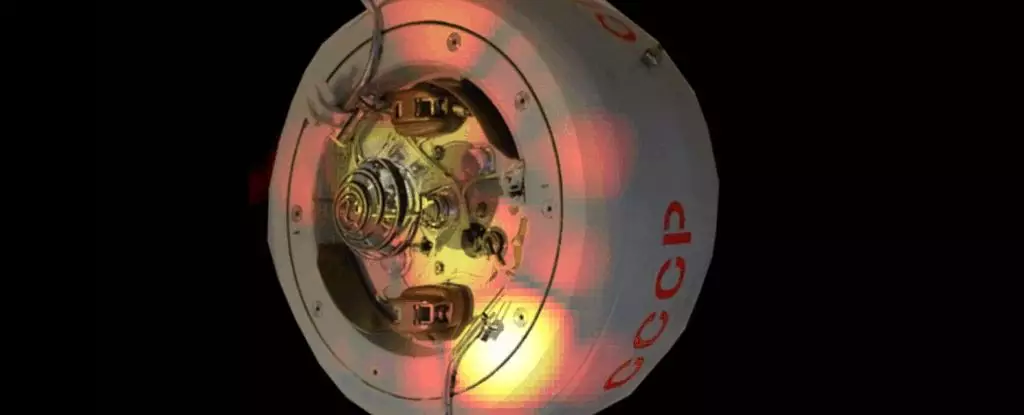In the early 1960s, the Soviet Union was engulfed in an epic race against time and technology—the space race. Amidst this frenetic backdrop, the Venera program emerged as a striking initiative aimed at investigating Venus, our fiery neighboring planet. It was a mission that would ultimately lay the groundwork for humanity’s understanding of the cosmos. Over the span of its operation, the Venera mission dispatched 29 probes to Venus, each carrying the ambitious expectation of penetrating the thick atmosphere of this hellish world. However, only 16 of those probes successfully managed to land or orbit Venus, revealing stunning revelations about the hostile environment that defines our closest planetary neighbor.
This venture was marred by challenges, from technological failures to logistical obstacles, and it produced mixed results, indicating the myriad difficulties of space exploration. What stands out in the annals of this ambitious initiative, however, is not merely the number of successful missions but also the stories of those probes that languished, like Kosmos 482. This probe, intended for a daring descent into Venusian atmosphere, became a tale of missed opportunities and lost potential, but it also embodies the spirit of relentless exploration.
The Ascendance—and Descent—of Kosmos 482
Launched with high hopes in March 1972, Kosmos 482 was destined for Venus, yet it found itself ensnared in Earth’s orbit—a celestial purgatory. For over half a century, it circled the planet as an errant traveler, prompting questions surrounding its fate and the challenges of maintaining operational spacecraft in increasingly crowded orbital space. The probe’s journey came to a dramatic climax on May 10, 2025, when it succumbed to Earth’s gravity in a reentry event that became a focal point for scientists and space enthusiasts alike.
On that fateful day, the German radar station operated by the Fraunhofer Institute captured the final moments of Kosmos 482 as it spiraled through the atmosphere, engaging imaginations worldwide. While the probe was never able to fulfill its original mission, its return was a spectacle rooted in scientific curiosity. A structure designed for extreme temperatures and pressures, Kosmos 482 was expected to withstand the rigors of reentry, making its descent a subject of fascination as hopes lingered over whether any remnants might survive intact.
The Harsh Realities of Venus and Orbital Debris
The stark reality of Venus is a powerful metaphor for the broader consequences of human ingenuity and ambition. With surface temperatures soaring to around 464 degrees Celsius and atmospheric pressure so overwhelming it crushes submarines in our oceans, Venus represents the extreme limits of extraction and research. Any craft attempting to land on such a surface must be equipped to endure conditions that can only be likened to those found in the depths of a furnace.
But far more urgent is the dilemma posed by space debris, a growing concern that has shifted scientific and public discourse about future missions. As Kosmos 482, long derelict, finished its languid orbit, it served as a striking reminder of our collective irresponsibility regarding the management of near-Earth space. While attempts to mitigate debris through crafting guidelines for ‘Design for Demise’ venture into earnest discussions, the perpetual influx of new missions threatens to overwhelm existing frameworks, leading us into a space of potential recklessness.
Lessons Learned from Kosmos 482
The narrative of Kosmos 482 raises essential questions about our place in space. The fact that a defunct probe can inspire such widespread curiosity underscores humanity’s innate longing for exploration, but it also brings to the forefront the ethical considerations of space endeavors. The delight in witnessing Kosmos 482’s reentry, and the hopeful anticipation of finding its remains are tempered by the reality that every journey into the cosmos carries with it the responsibility of stewardship—a responsibility too often neglected.
Our venture into space should compel immediate introspection. Kosmos 482 represents not just a tale of mission failure but an opportunity to learn. Avoiding the pitfalls that led to its fate could reshape the landscape of future space exploration—it could redefine the evolution of our technology and ethics as we navigate the terrestrial and cosmic realms alike.
As we reflect on Kosmos 482’s extraordinary journey and untimely demise, it becomes increasingly clear that our cosmic endeavors must be driven by care and foresight. Our celestial aspirations should not only elevate human knowledge but also remind us that the universe is a shared space, requiring mindful interaction for generations to come.


Leave a Reply